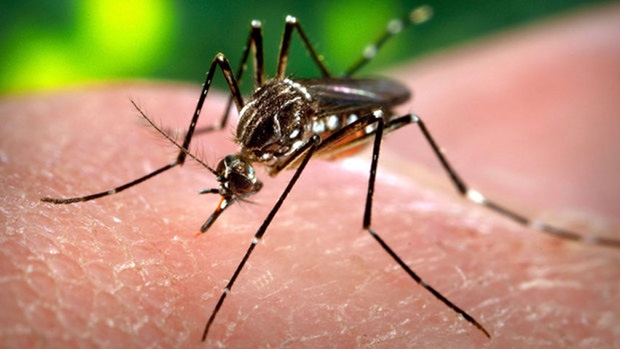
The Zika virus can spread through sexual intercourse as well as mosquitoes; the virus has a causal relationship with microcephaly; and it also spreads from the mother to the fetus. (image: Wikimedia commons)
SEOUL, May 2 (Korea Bizwire) – The causal relationship between microcephaly and infections from the Zika virus as spread via sexual intercourse has been confirmed.
Research has yet to be undertaken on how the virus spreads from non-symptomatic patients, the contagious time period for infected patients, and at what point during pregnancy the fetus is vulnerable to infection.
Information regarding the infection process of the Zika virus, which began in Brazil and South America and is causing widespread fear and panic across the globe, remains limited as it has only recently been classified as an epidemic.
According to the Korea Centers for Disease Control and Prevention on May 1, it was discovered that the Zika virus can spread through sexual intercourse as well as mosquitoes; the virus has a causal relationship with microcephaly; and it also spreads from the mother to the fetus.
On the other hand, research still needs to be conducted to find out at what point during pregnancy the fetus is vulnerable to infection; whether the virus can be spread from an infected person displaying no symptoms; and the maximum number of days an infected person can spread the virus from the day of infection.
“Transmission through sexual intercourse and blood transfusion – definite cause of microcephaly”
It has been confirmed that the Zika virus can be transmitted through sexual intercourse. Nine countries reported the spread of the virus as the result of sexual activity, and in all of the cases, the victims were previously healthy individuals who were infected after engaging in sexual activity with a patient who had traveled to an infected region.
Eight cases were reported in the United States alone, and in one case, the infection spread via sexual contact between homosexual individuals. In addition, France, Italy, Argentina, New Zealand, Chile, Portugal’s Madeira Islands, Peru, and Canada reported one infection case each.
The only existing cases of the infection spreading via a blood transfusion were both documented in Brazil. Last March, both the blood donor and the recipient were infected with the Zika virus, and the virus found in the blood of the two individuals matched. Another case was reported in which an individual who was hospitalized for three months and consequently had no contact with mosquitoes was infected with Zika virus after receiving blood.
At the present time, the causal relationship between the Zika virus and microcephaly is accepted as valid. The U.S. Centers for Disease Control and Prevention (CDC) released the following statement on April 13: “The Zika virus is the indisputable cause of microcephaly.” In multiple cases, it has been confirmed that the virus can spread through vertical transmission from the mother to the fetus.
However, as of now there are no cases of the virus spreading from animals to humans. The first known case of Zika virus infection was in a monkey in Uganda, Africa in 1947. There is likewise no case of animal-borne, mosquito-human indirect infection. Unfortunately, a vaccine that could cure those infected with the virus has yet to be developed.
With the Rio Olympics coming up soon, Brazilian officials declared that they would develop a vaccine in record-breaking time, but it is predicted that a vaccine will take at least three to five years to develop considering animal testing and clinical trials.
By Esther J. Kim (editor@koreabizwire.com)






